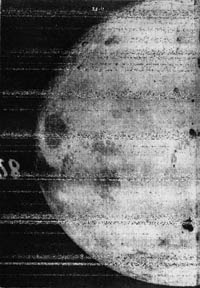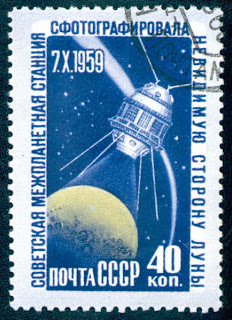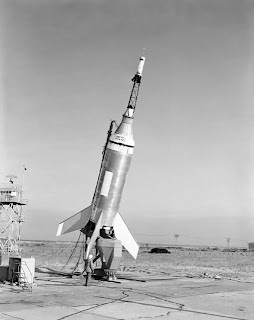
Ares-1X on the way; Launch control center in foreground
At about 11:39 pm MDT Monday, NASA began the rollout of the Ares-1X test rocket from the VAB (Vehicle Assembly Building). Securely mounted on the giant crawler, the system will slowly roll over to Pad 39B which has been undergoing modifications for use with the new launch system.

View from High Bay 3 inside the VAB; catwalk is 16th floor
While listening to the NASA TV announcer, I believe I heard him say the rocket weighs in at about 16,000,000 pounds. Not sure if he meant rocket and crawler together. The crawler and base carefully adjust enormous hydraulic systems to keep the base level and cause minimum vibration to the rocket assembly. It's expected that even as tightly clamped as possible, the top of the rocket may move as much as a foot, while the base may adjust up to 6 inches.

SRM first stage has 4 segments; Actual Ares will have 5
For comparison, keep in mind that the VAB was built tall enough so that the giant of them all, the Saturn V, could just barely make it through the doorway with the launch tower attached to the base. Looking at the picture above, you can tell that the Ares=1X is almost as tall as the old Saturn V!

Rear view of Crawler from VAB High Bay
The crawler is moving along slowly, working up to its expected speed of 8/10 of a mile per hour. In the photo above, look carefully for the man walking beside one of the crawler tracks for a size comparison. Ahead of the crawler, a huge water truck is wetting down the gravel roadbed with great sprays of water to keep dust down and settle the gravel.
The capsule at top is a "boilerplate" model, which means it has the same dimensions as the eventual capsule but has no equipment inside other than telemetry sensors. This test rocket has 4 segments in its solid rocket motor first stage, which have participated in various shuttle missions going back to the late 80's.
I just heard that the actual weight of the rocket stack is 11,067,000 pounds. The order has been given to begin closure of the VAB door segments. Next stop: Pad 39B, which at one time saw the launch of Apollo 10. Pad39B is usually kept as a backup readiness pad for human spaceflight.















